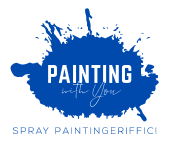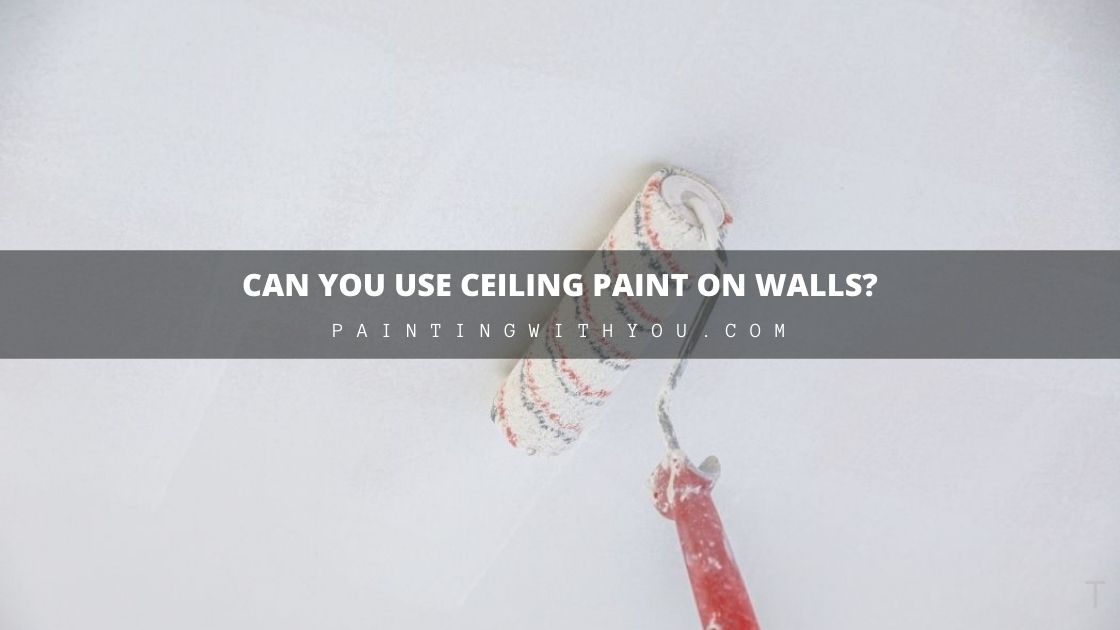If you’re about to paint your interior walls, you may have questions about the best way to achieve a professional paint job. Perhaps one of those questions has to do with whether or not it’s possible to use ceiling paint on walls.
In a nutshell, you should never attempt to use ceiling paint as a wall finish. It is designed for toughness and simplicity of cleanup, making it, unlike wall paints that are specifically developed for paintability, dry time, and adhesion.
In this post, we’ll tell you where to use ceiling paint, what the differences are between it and wall paint, and how to pick the suitable paint for your walls.
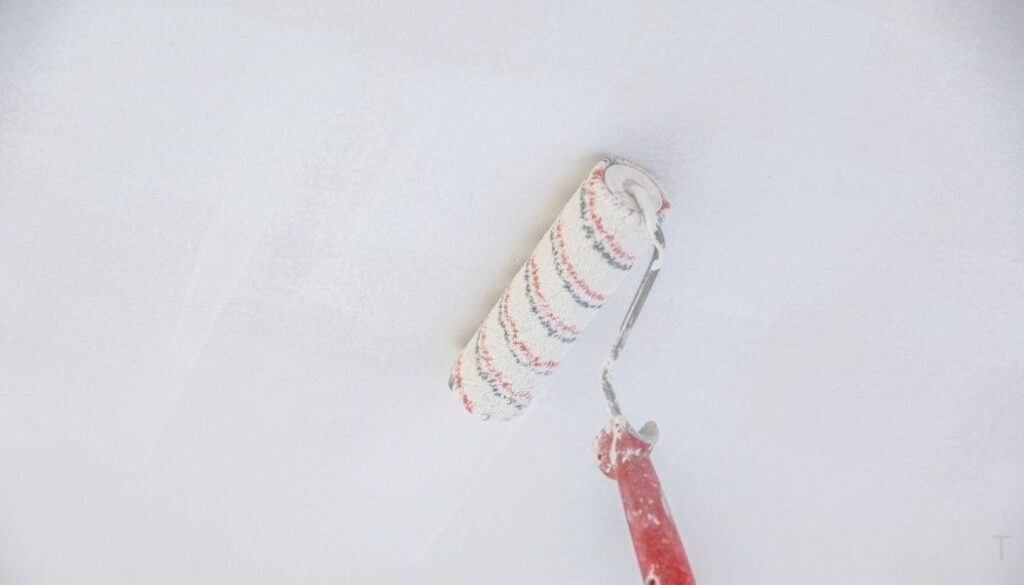
Can You Use Ceiling Paint as a Wall Finish?
Ceiling paint is designed to withstand the heat of a light fixture, and humidity from steam or baths. Walls, on the other hand, receive very little abuse compared with ceilings, which means that ceiling paint will not be suitable for walls.
What will happen if I paint my walls with ceiling Paint?
If you choose to paint your wall using ceiling paint, there is a good chance that your top coat of paint will begin to peel off over time. This type of paint is not designed to bond to your walls, but rather it’s formulated for smooth surfaces like ceilings or wood paneling.
When To Use Ceiling Paint on Walls
There are many other places where ceiling paints can come in handy besides creating a smoother finish for accent designs on your interior walls. You can
- fix imperfections in walls (stains, scratches)
- create textured effects.
- remove cigarette smoke and other odors.
- create a smooth base for wallpaper.
- paint on walls in kids’ room when without taking off wall stickers.
Can You Use Wall Paint as a Ceiling Finish?
You can use wall paint as a ceiling finish in some cases. For example, if you want to create a bright white surface over dark wood beams that are part of your ceiling design, using wall paint might be an option for you.
However, using wall paint will probably not provide the same professional-quality results that you would get by simply purchasing high-quality ceiling paint made for this purpose (at a home improvement store).
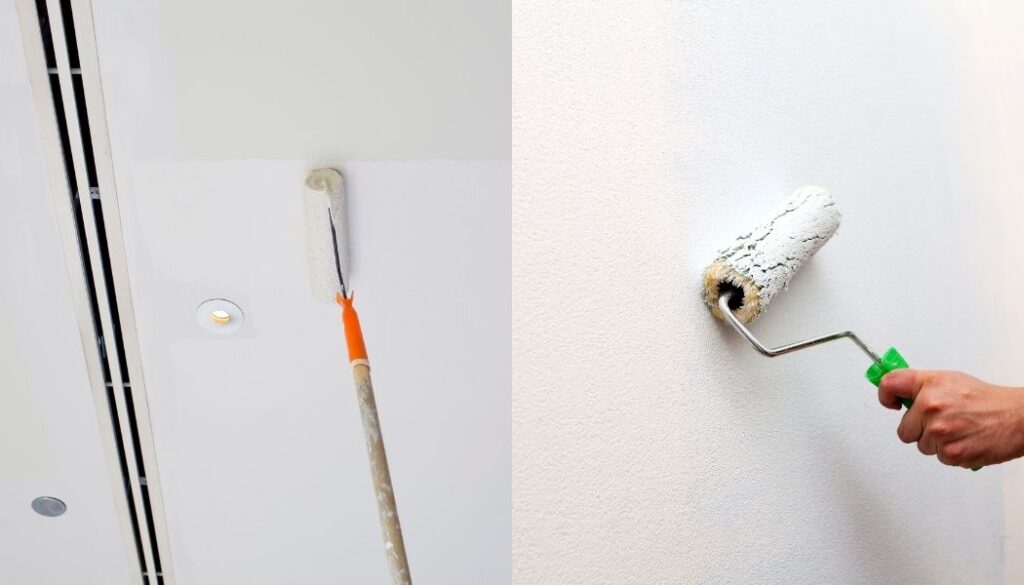
What is the Difference Between Ceiling and Wall Paint?
We’ll look at the key distinctions between ceiling and wall paint in further detail.
Durability
Ceiling paint is typically more durable, as it’s formulated to handle a lot of foot traffic and abuse. Wall paint, on the other hand, may not hold up as well over time against abrasion from chairs and tables moving across your wall on a daily basis. In addition to this, ceiling paint tends to be thicker than regular wall paint.
Higher Viscosity
Viscosity refers to how easily paint flows from your roller or brush. Ceiling paint will have a higher viscosity than wall paint. This means that the ceiling paint will go on more evenly, without any tendency to drip off of your roller or brush.
Longer Dry Time
Ceiling paints typically take 24 hours (or longer) before they dry completely – in contrast with regular wall paints, which can typically be dry in under four hours. This is because ceiling paint has an increased amount of titanium dioxide to help it resist staining, making it thicker and longer-drying.
Fading
Because ceiling paint isn’t intended for use on walls, it doesn’t contain the components necessary to protect against UV light. On the other hand, wall paint is specially formulated to provide adequate protection for your walls under most conditions.
Ease of Application
Ceiling paint is easier to apply than wall paint simply because you don’t have to tape off the baseboard, which saves time and effort—no matter how much you love your walls, few people enjoy taping trim.
Color Selection
Wall paints come in an almost infinite variety of colors, but ceiling paints are more limited in color selection.
Cost & Availability
Wall paint is much more readily available and typically less expensive than ceiling paint.
Possible side effects
Applying ceiling paint to your walls can make them more difficult to clean. If you apply the primer coat directly to the wall, it may also be very shiny when dry (especially if painted with a glossy finish), which is unattractive and difficult to live within most rooms.
What Are The Different Finishes For Ceiling Paint?
Ceiling paint is most often offered in a flat white finish, although it can also be had in an eggshell finish.
Flat Paint Finish
Flat paint or matte finish is non-reflective and looks more like wall paint. Because od minimal light reflection, ceiling paint with a matte finish can be used in spaces such as hallways, where you don’t want the light from your fixtures to bounce off of the surface it is hitting.
Eggshell Paint Finish
An eggshell finish is somewhere between the semi-gloss of wall paint and flat ceiling paint. It is less glossy than a semi-gloss finish but still has some shine to it. Because it offers an excellent balance between sheen and durability, eggshell ceiling paint is a popular choice for many rooms in the home.
It can be used on ceilings as well as walls, which means you won’t need different paints for the two areas in your home.
TIP: read my closely related post: Satin vs. Gloss Finish | What is Right Paint For You?
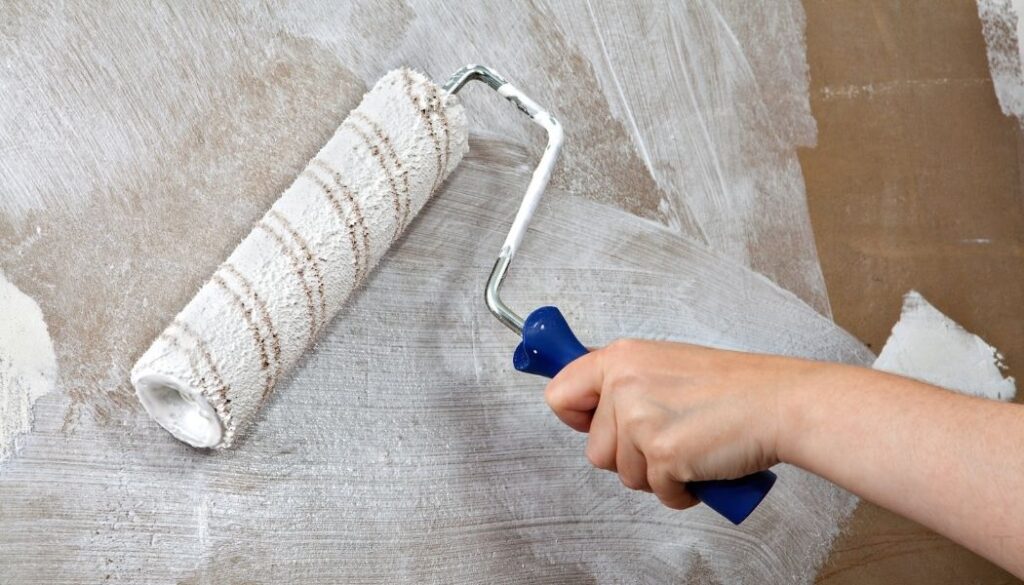
Can I use Ceiling paint as a Primer under Wall paint?
In most cases, the answer is no. Ceiling paint is usually not designed as a primer for walls, which can make your wall-less durable and more difficult to clean over time.
When to Use Ceiling Paint as a Primer?
You can use ceiling paint as an undercoat or primer for your walls if you want to create a smoother surface for wallpaper or accent designs on your walls. In these situations, it’s best to apply several coats of ceiling paint (as opposed to just one) so that you achieve the proper texture and coverage without causing problems with adhesion between the two layers of paint over time.
What Coatings Should You Use?
Typically, gloss or semigloss coatings are used with ceiling paints. These finishes are intended to provide adequate protection for the surface. Matte coatings may not adequately protect your walls from damage or discoloration over time.
What are the alternatives for primer under the wall paint?
Of course, there are many proven products you can use to prime or prep interior walls before painting them. For example, a good-quality drywall primer will adequately prepare even very porous surfaces for topcoats of paint.
NOTE: Depending on what you're painting over and how much preparation work you need to do, buying an appropriately strong primer may be more economical than using ceiling paint across your entire wall surface.
What is the Right Paint for my interior Walls?
Choosing the right paint can be a challenge when there are so many choices available. However, if you’re looking for a high-quality paint that will allow you to complete your interior painting project successfully without damaging your budget, consider premium-grade paints.
Premium paints are formulated to provide the highest levels of coverage and durability available, so they’re great for all kinds of painting projects.
Best Paint for Ceilings and Interior Walls
Best for Ceilings – KILZ Color-Change Stainblocking Interior Ceiling Paint
I’m a fan of KILZ ceiling paint, which I think is the best on the market right now. When you put paint on your ceiling, you’ll notice a subtle pink tone, but it dries to white within an hour. This way you can tell exactly when is dry completely.
It’s specifically designed to hide minor to moderate stains plus, it has excellent coverage and can be applied over smooth or porous surfaces!
Best Satin Paint for Wall – Prestige Interior Paint and Primer In One
If you are searching for premium high quality satin paint, I highly recommend Prestige Interior Paint. You’ll notice its high quality when you don’t see brush or roller marks while painting. It may be used to paint living rooms, family rooms, media rooms, bedrooms, dining rooms, and hallways without priming first!
It comes in over 20 colors including neutrals like white and gray as well as bold hues like red and blue! With such an extensive color selection you’ll be able to find the perfect color match for every room of your house.
Paint is very durable and with proper usage, it can last up to 10 years. In addition, it has low level of VOCs, so it is safe for your home end evironment.
TIP: If you enjoy the characteristics of this paint but wish to try other options, click here for semi-gloss and here for Eggshell.
Should You Paint The Ceiling Or Walls First?
If you’re not sure which surface to paint first, consider the overall room layout. If you’ll be moving furniture around after it has been painted, keep in mind that the walls will be more forgiving than the ceiling when it comes to repositioning heavy items.
How to paint walls with ceiling paint?
There are a few important factors to consider when you choose to paint your walls using a ceiling paint, whether it’s repairing cracks or painting a children’s room.
Step 1 : Surface preparation
You’ll need to make sure your wall surface is free of any dirt or dust before you begin painting. If there are cracks or holes in the walls, fill them with putty and sand down before painting begins.
Step 2 : Color selection
Ceiling paints generally come in neutral colors that won’t compete with brighter wall colors. However, some ceiling paint companies do offer decorative finishes that can be used as accent areas on your walls.
Step 3: Painting
Painting horizontally is the best way to avoid drips or pooling on lower walls. This type of paint application also allows your ceiling paint to dry faster so you can put up your drop cloths and other supplies sooner than if you were painting vertically.
Step 4: Cleanup
Finally, because ceiling paints are formulated for vertical surfaces like ceilings, they may leave behind a strong odor that may not be appealing in an interior setting. To reduce odors after painting, keep windows open as much as possible and use air purifiers to help absorb unpleasant smells before they become overpowering.
Can You Use Ceiling Paint on Doors and Windows?
Though ceiling paint is good for walls, you should not use it on doors or windows because it isn’t cleanable and doors and windows are prone to messes.
You can save yourself some money by using paints designed especially for doors like Modern Masters, one of the bestsellers on Amazon.
Realted Questions
Yes, you can use ceiling paint on interior trim. Most ceiling paints are formulated with durable ingredients that will provide great adhesion and coverage when applied directly to wood molding and other types of furniture trims.
The best method to use ceiling paint is as a base coat or primer, followed by a semi-gloss paint finish.
Because it is formulated to adhere directly to ceilings, ceiling paint should not be mixed with regular interior wall paints.
Since ceiling paint is tough stuff, you won’t have any trouble cleaning your walls after application. To clean up any dust or messes that have accumulated during the painting process, just dampen a cloth with warm water and wipe down the surface of the walls. If there are stubborn stains, try using mild soap combined with an all-purpose scrubber sponge.
Though flat white paint is often used for ceilings, not all flat white paints are suitable for ceiling application. Always check the label of the paint container to make sure it’s designed for interior walls and ceilings before you buy or use a particular brand of paint.
